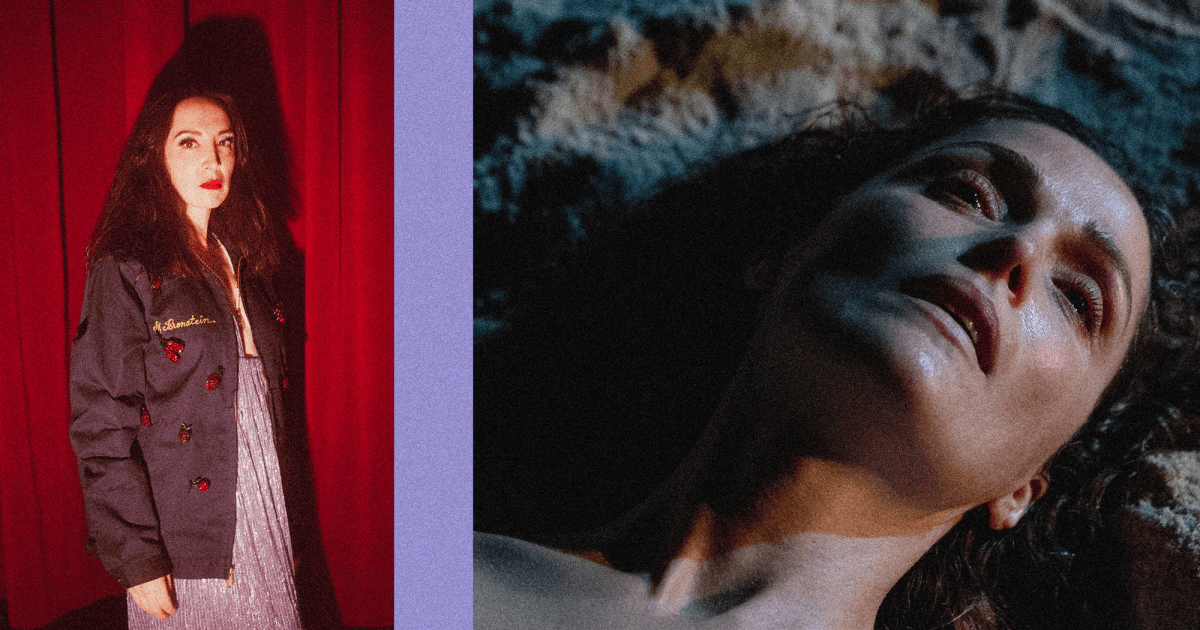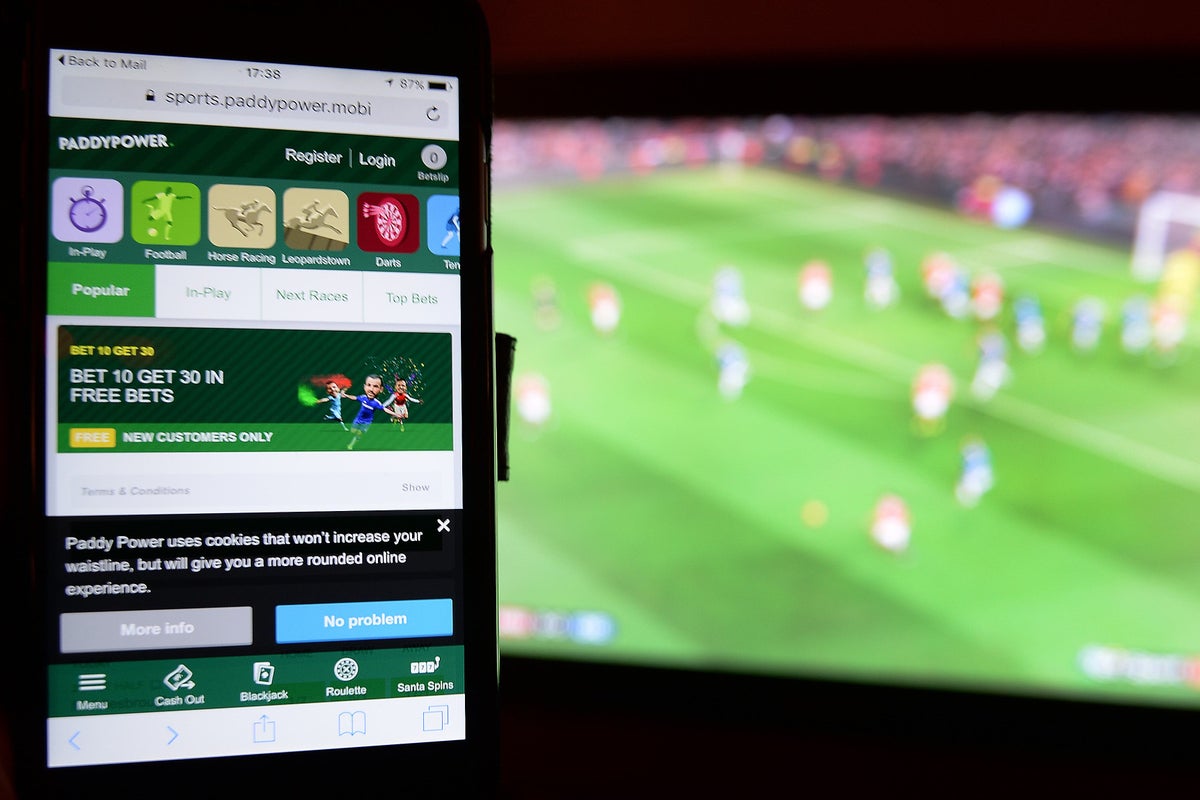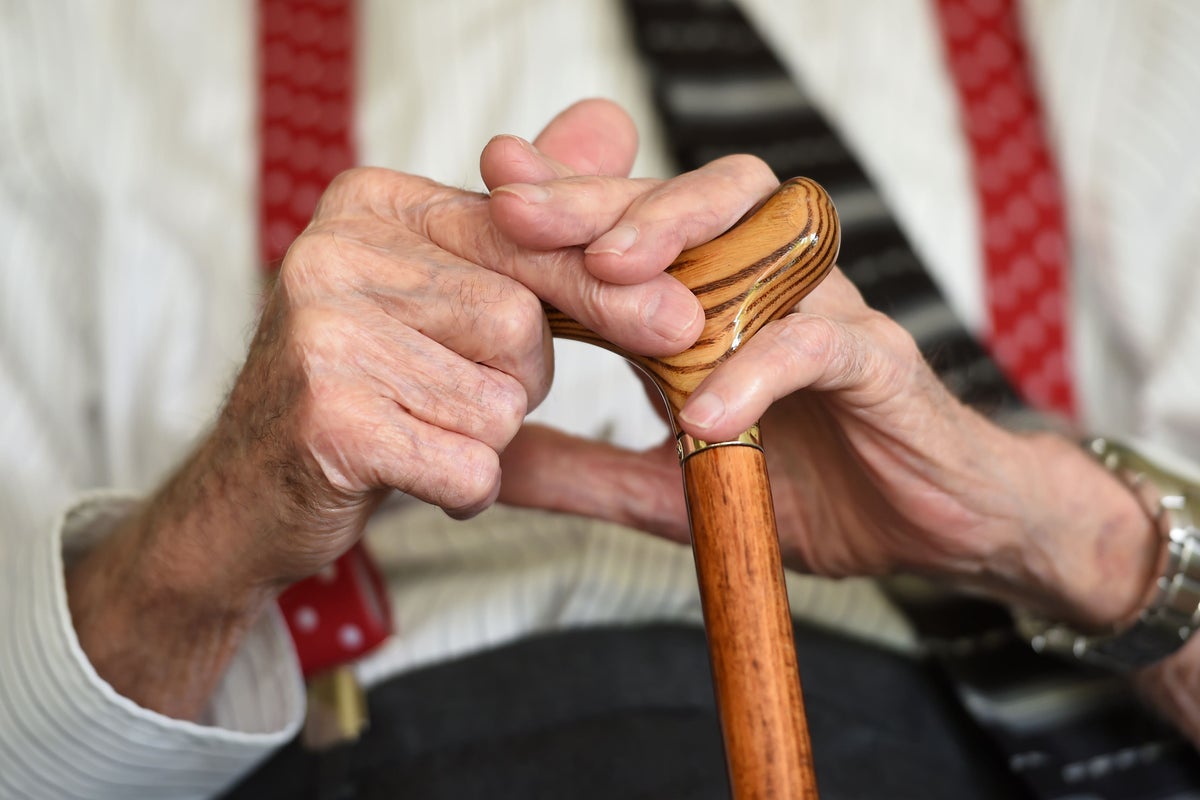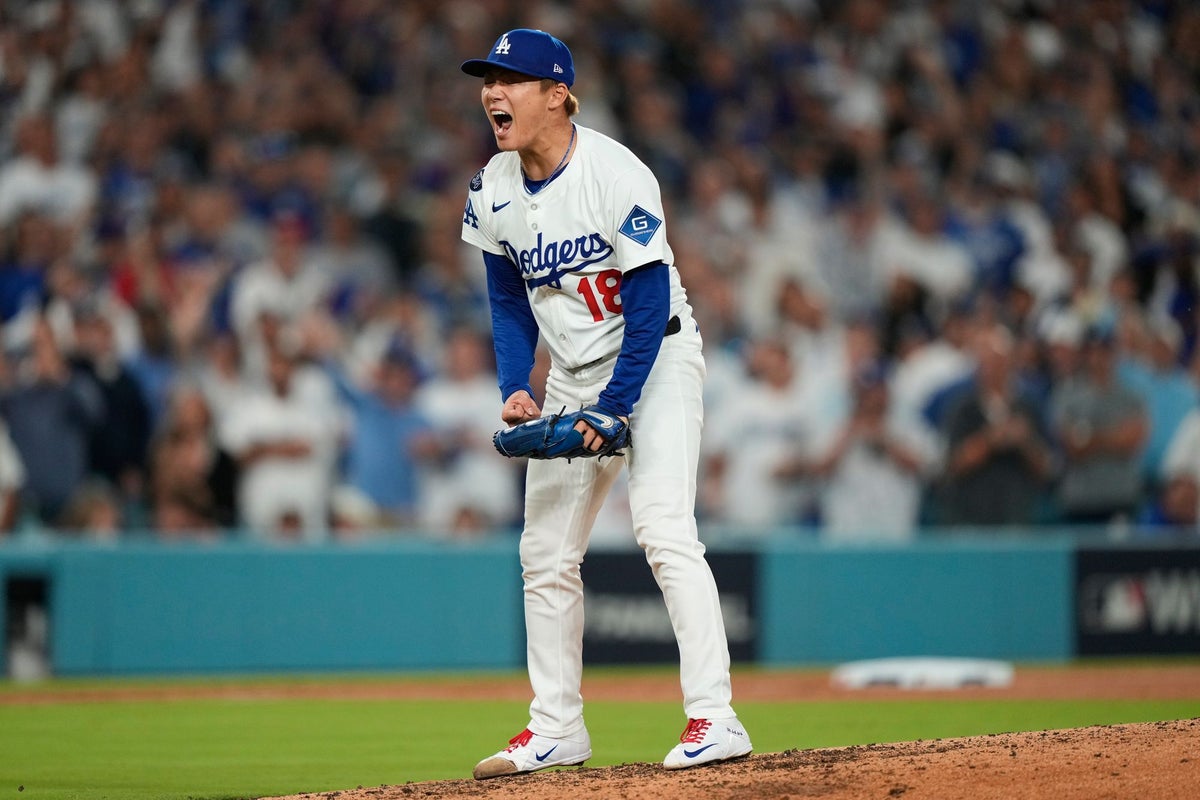What happens when a mother is pushed to the brink, when stresses both tedious and extraordinary break her beyond recognition? What happens is that she might look a lot like Rose Byrne.
That might seem impossible, given that Byrne is, after all, a beautiful A-list actor. The suggestion even borders on cruelty. But her knockout performance in If I Had Legs I’d Kick You, a new film from Mary Bronstein, is the stuff of terrifying relatability. Byrne plays Linda, a mother flailing in an increasing state of crisis after the ceiling of her apartment suddenly collapses, forcing her to take refuge in a gritty motel room with her young daughter, who suffers from a mysterious illness that requires feeding tubes. Meanwhile, Linda’s work as a therapist grinds on with multiple clients, including a missing mother in the throes of acute postpartum depression. Linda’s efforts to manage her own deteriorating mental health by seeking the help of a colleague, another therapist played chillingly by Conan O’Brien in his first dramatic acting role, are met with escalating antagonism. Meanwhile, her husband may be traveling for work, but his requests for updates on the ceiling are relentless. Wine is chugged, and drugs via the dark web are pursued.
If I Had Legs I’d Kick You is not an explicitly political film. With seven years in the making, it could not have predicted the landscape into which it premieres today. But the film arrives at an urgent moment, a shot-out-of-a-cannon rejoinder to the hostile suggestion that women in pain “tough it out.” Its ability to maintain darkly humorous, propulsive energy despite the anxiety-inducing twists speaks to Bronstein’s enormous skill as both a writer and director. Ahead of the film’s theatrical release, I talked to Bronstein about a woman’s rage, Courtney Love, and the radical beauty of an untouched middle-aged face.
Talk to me about some of the personal parallels that led to you writing Kick You.
I have a daughter, and she’s 15 now and doing great. But when she was 7 years old, she became very ill. We are New Yorkers, but to get her the treatment that she needed, we had to go to San Diego. When I spoke initially to the place in San Diego, I asked: “Well, how long does the treatment usually take? How long should I expect to be in San Diego?” And they responded, six, max eight weeks. We were there for eight months.
While we were there, my husband, Ronald Bronstein, needed to stay back in New York. He’s a filmmaker who is a close creative partner with Josh Safdie, and during this period, they were making Good Time. So he’s making this film with Rob Pattinson while I’m in San Diego in a really shitty, tiny hotel room as a roommate with my daughter. It was incredibly stressful for obvious reasons, but I’m also the type of person who thinks of things in existential terms all the time. Like, my husband would say to me: “You can’t have an existential crisis every day. You can’t dismantle your entire existence and life choices every day.” But that’s just how my brain works.
During this time, I had a strong sense of dread and anxiety all the time, and I couldn’t articulate it. And part of it was that I felt trapped. [My daughter] was young, so the lights would go out at 8 p.m., and I’d be in this tiny room. Now, I didn’t do the things that Linda does in this film. But what I did for my escape was I would go into the bathroom and turn on the light of this horrible, cheap hotel room and sit on the tiles of the bathroom floor, drink cheap wine, and scarf candy and junk food.
One night, I was suddenly able to pinpoint that I felt like I was completely disappearing into the caretaking of my daughter. The dread shifted from what the situation was to: Wait a minute, this situation is going to end. She’s going to get better, and we’re going to go back to New York, and then what? Then what? That’s the emotional and physical, literal place where the film started from. I actually started writing the script in that bathroom while going through the situation. No one knew I was writing it for myself at that point, and the rare beauty of a middle-aged woman.
“I literally went into a trance. Like, ‘tough it out?’ You’ve never been pregnant. You don’t know what it’s like. Also, don’t tell me what to do with my body.”
This is an unflinching portrayal of a woman in acute stress. Linda is seen literally begging for someone to just help her. But everyone around her seems to expect nothing but calm and order. What do you think makes us so blind to a woman in crisis, even when she is screaming for help?
That’s such a great question and a question I haven’t gotten before. I think that in American society, a woman’s rage is terrifying, and the idea is to quell it by any means. A lot of the advice that we get as little girls is: Be a good girl. The difference between you and a boy is that you are not disruptive in a classroom. That stays with us, right? You know that scene in Network where [Howard Beale] goes, “I’m mad as hell, and I’m not going to take this anymore!” It’s like that. We suddenly don’t have room. And if a woman does have that personality and does have that boldness to do that, she’s villainized, and we don’t like her. We hate her.
I’m thinking of cultural things, too. I’m thinking about people like Courtney Love. Why was she hated? It wasn’t her music. She was hated because she was a woman who was loud and would say exactly what was on her mind. [Love] is the type of woman that I’ve always been attracted to. My favorite feminist thinker of all time is bell hooks, and her work in Ain’t I a Woman. That no woman can write enough because there has not been enough. I think that right now, in 2025, is one of the scariest moments to be a woman. I don’t want to get political, because my work is not political in a literal sense, but we must acknowledge that this is a time in history where our rights are being taken away, and we are being told constantly in the media, “Just shut up.”
“You’re about to spend just under two hours with this woman, and you are going to watch her. You are going to deal with it. This is a woman who’s going through it. She is crying. It is on a giant screen. And instead of averting our eyes like we do in normal life, I’m making you deal with it.”
Meanwhile, our president is telling mothers to “tough it out.”
I was on a plane coming here to Los Angeles when I glanced over at a person’s TV screen, sort of diagonal from where I was sitting on the plane. I couldn’t hear it, but I saw the message at the bottom, the president telling pregnant people to “tough it out.” I literally went into a trance. Like, tough it out? You’ve never been pregnant. You don’t know what it’s like. Also, don’t tell me what to do with my body.
I think with my film, it’s “Don’t tell me what to do with my emotions.” Linda is screaming into the ether. “Is anything that I’m saying being heard or important to anybody? Can you hear me?” There’s a scene where she literally screams into her therapist’s face, this person who is supposed to help her, where she screams one inch from his face, “Help me!” And it still cannot be heard. It’s a moment where she is rejected in the most awful way. The filmmaking choices that I make in this film speak to the woman who doesn’t want to shut up or tough it out and instead wants to say: “No, this isn’t fair. No, I actually feel this way, and I’m going to make you listen to me.”
I open the film with an extreme close-up that keeps getting closer and closer until we’re right in Linda’s eye as she’s crying. That’s me saying to the viewer: “You’re about to spend just under two hours with this woman, and you are going to watch her. You are going to deal with it. This is a woman who’s going through it. She is crying. It is on a giant screen. And instead of averting our eyes like we do in normal life, I’m making you deal with it.” You’re going to see her tears, and you’re going to deal with it, and however it makes you feel, that’s not my business. It’s the viewer’s business. And it’s not me indicting the viewer. It’s really me, in quite a radical way, just saying this is a reality. Women have emotions. They’re not always polite; they’re often messy.
I want to talk more about the close-ups. One thing I loved about Kick You is how the close-ups of Rose Byrne let you see her real face. Like, that might be Rose Byrne, and she is gorgeous…
Oh, totally gorgeous. One of the most gorgeous women that we have in show business today. And I’m sorry to interrupt your question, but I want to say that one of the reasons that I cast her is because she and I are the same age. We’re middle-aged women, and she has a real face. She has the real face of a middle-aged woman.
Exactly! The shots captured her exhaustion. They felt radical. Like, yes, of course, Rose is beautiful. But I know that woman. She is exhausted and over it. That woman is me!
[Holding a C Magazine cover featuring Byrne] This is one version of what we are shown, and this is real, too. She is gorgeous. But for me, it was very, very important that I had a middle-aged woman who had not had work done on her face. I don’t disparage women who do, and I don’t judge women who do. By the way, Linda happens to be a gorgeous woman. She is a beautiful, gorgeous woman, but she’s going through it. What I wanted to do with the close-ups is that by the end of the movie, you know every pore on this woman’s face. Every pockmark when she smiles. How her eye crinkles when she cries. That’s disappearing in our society. What happens if everybody gets their face done? What are young people, especially young girls, seeing? Are they going to know what a middle-aged face even looks like? That’s something that freaks me out, but it was important to me. And Rose was so on board and not scared.
“The filmmaking choices that I make in this film speak to the woman who doesn’t want to shut up or tough it out and instead wants to say: ‘No, this isn’t fair. No, I actually feel this way, and I’m going to make you listen to me.’”
The other thing the close-ups are doing is exposing. Linda cannot hide from the camera. She’s trying to hide and run away from everything else. But she cannot run away from my camera. That was important, too. You’re trying to escape. But we see you. Maybe none of the other characters in the movie sees you. But we see you. The tragedy is that she doesn’t know that, because she’s inside the film. But we see her, and we see her cry, and we see the messiness. When the movie opens, that’s as good as it gets for Linda in both physical appearance and mental state. The de-evolution that follows is purposeful and calculated in a mathematical way that I worked out with the makeup and costume departments. By the end of the film, what I wanted her to really look like was a disheveled teenager, because that’s what she becomes emotionally. Actually, something that I don’t know if I’ve said in another press, but that band T-shirt that Rose wears, with the album Cheap Thrills by Big Brother and the Holding Company and Janis Joplin, is a T-shirt I bought when I was 14. At the start of the film, we see Linda wearing it as pajamas. But then she starts wearing it to work. By the end of the film, in that final therapy session, she’s wearing the shirt with a hoodie and looks like shit. But that’s where she’s at.
I have to give all kudos to Rose. She never, ever, ever had an issue with how I wanted her to look or how close the camera was going to get. She knew what it meant as an actress, as an artist, and she agreed with it. It shouldn’t be brave, but it is brave.
Definitely brave. I thought exactly the same thing, like, I am really seeing her face, a real face, the blemishes and all. It just felt like something I had never seen in movies before.
Thank you so much for bringing that up. Because nobody really brings it up, and I think some of that might be because I mostly talk with male journalists. Yes, I’ve talked with some wonderful female journalists. But filmmaking is a male-dominated space, and so is journalism. Maybe the question feels like it’s not polite to ask for some people, but it’s a very important question and something to talk about.
Let’s turn to Conan, who, I must admit, I did not expect to be so effective as a serious therapist. What were some of your thoughts that went into casting him?
How good is he? I want people to understand when they see his name on the poster that they know that this is not a cameo. It’s not him playing himself. It’s not him being the comic relief. He is turning in a proper dramatic performance that is on tit-for-tat with Rose as a scene partner. And what an extraordinary thing, because it started with me approaching O’Brien and him saying: “I am not an actor. I want to do it. I love the script. But I don’t know if I can do it.”
I don’t want to give away, but there’s a monologue that he does. And while I was writing it, I literally thought to myself, I am writing something that is not performable. I’m writing something so didactic, there’s no way it’s performable. So I’m going to have to work it out with whoever the actor is. But O’Brien performs that thing, and he kills it. And that is a testament to his talent. He radically availed himself of this totally unknown form that he had never done before. He was such a dream to work with.














